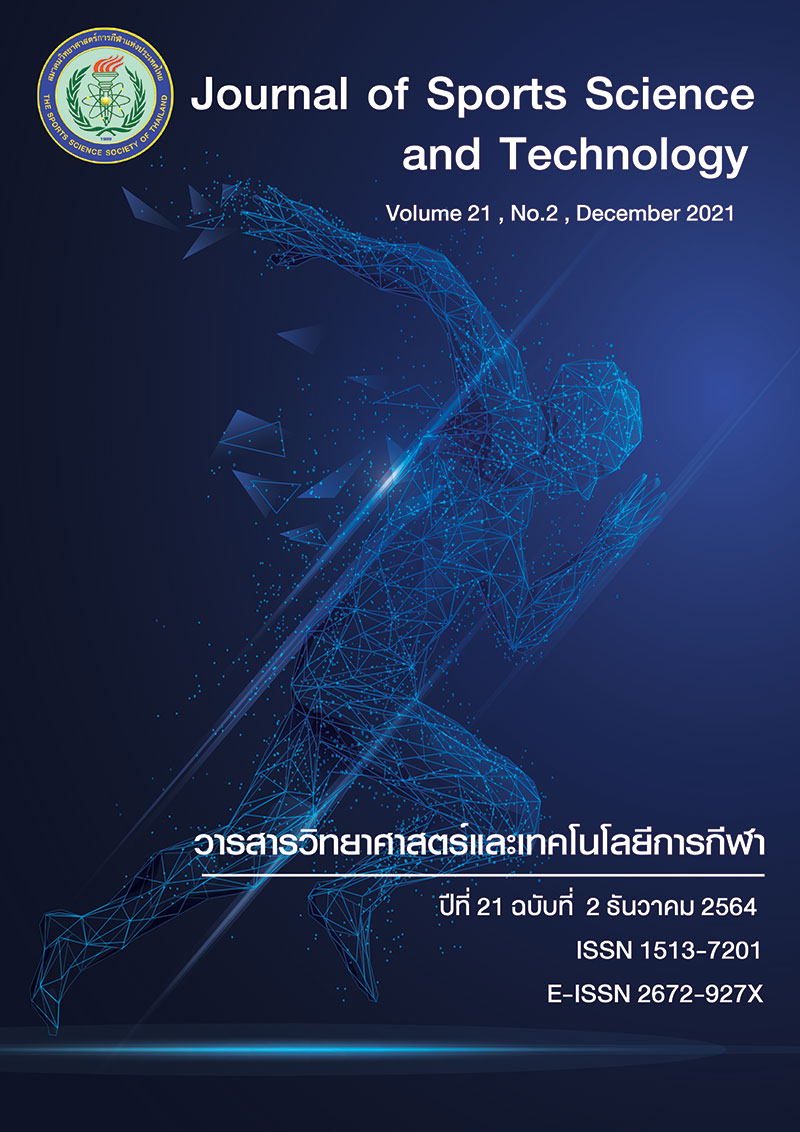EFFECTS OF COMPLEX TRAINING ON LEG MUSCULAR ACCELERATION AND BALANCE IN THAILAND MALE NATIONAL WINDSURFING
DOI:
https://doi.org/10.14456/jsst.2021.13Keywords:
Rate of force development, HQ Ratio, Complex Training, Muscle Balance, WindsurfingAbstract
The purpose of this study was to investigate the effects of complex training on leg muscular acceleration and balance in Thai male national windsurfing. Fourteen male national windsurfers were separated into 2 groups. Control group (n=7) age 19.28 ±4.95 y; height 169.64±5.97cm; mass:57.42±8.04 kg; and BMI: 19.87±1.81 kg/M2 respectively. The experimental group (n=7) age 23.14 ±8.39 y; height 174.85±10.57cm; mass:67.28±5.65 kg; and BMI: 22.14±2.54 kg/M2 respectively. They were rated of force development and counter movement jump evaluated using force plate and muscle strength using an isokinetic dynamometer of angular velocities at 60°s-1 before and after 6 weeks training. Control group performed their routine windsurfing training program where as complex training was combined with routine windsurfing program in the experimental group. Training program was performed 3 times per week for 6 weeks. The data were presented as mean and standard deviation was used an unpaired t-test to compare the significant difference between control and experimental group and paired t-test to compare the significant differences between pre and post-test within 2 groups. The statistical significance was set at p<0.05. Results: The result found that there were no significant different between control and experimental group in rate of force development, counter movement jump, right leg HQ ratio) and left leg HQ ratio at angular velocity at 60°s-1 respectively. However, the data shown that there were significantly different between pre and post-test within experimental group in rate of force development, counter movement jump, right leg HQ ratio and left leg HQ ratio at angular velocity at 60°s-1 respectively. Discussion: The complex training is able to activate the central nervous system to recruitment motor units. In addition, possibly more fast twitch fibers (type II) are available for the explosive exercise, greater improvements in power and rate of force development for windsurfers hence a better training benefit for sail pumping and boardsailing stabilizations. Conclusion: Complex training may be stimulus nervous system to recruitment motor neuron for created acceleration during sail pumping in windsurfers.
(Journal of Sports Science and Technology 2021; 21 (2):86-99)
(Received: 18 June 2021 , Revised: 24 August 2021, Accepted: 25 August 2021)
*Corresponding author: Arom TREERAJ
College of Sport Science and Technology, Mahidol University, Nakhon Prathom, THAILAND
E-mail: treeraj@hotmail.com






